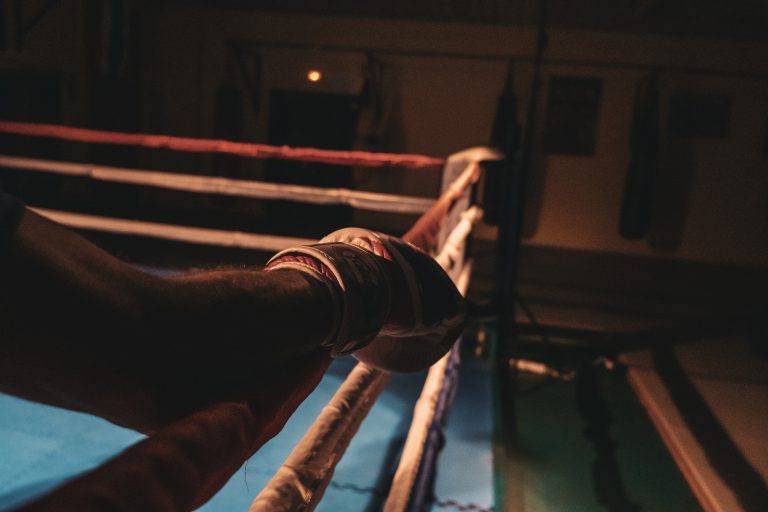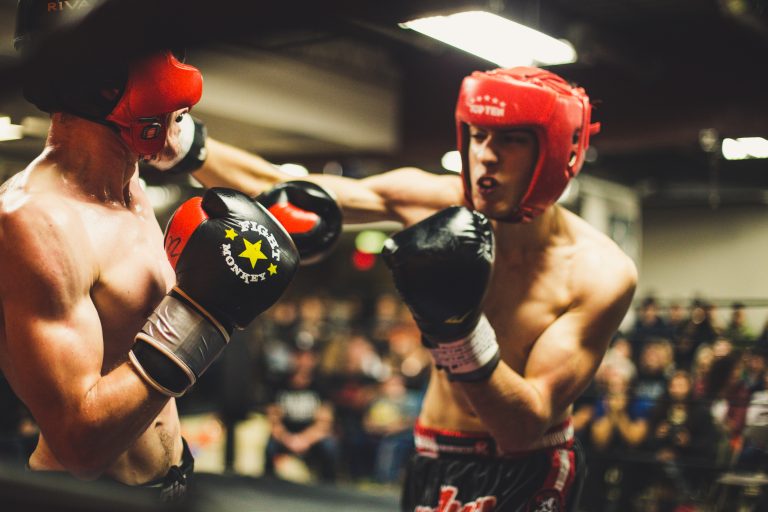The 10 Most Effective Shock Techniques in Karate
Karate is a martial art that has become increasingly popular around the world. It focuses on striking techniques such as punches, kicks, knee strikes, and elbow strikes. These techniques are used to immobilize or disarm an opponent quickly. In karate, there are various shock techniques used that can surprise the opponent and knock them down. In this blog post, we will discuss the top 10 most effective shock techniques in karate.
1. Gedan-ate (Lower-level Strike)
Gedan-ate is a shock technique commonly used in karate. It involves a low sweep or kick to the legs, which often causes the opponent to lose balance and fall. This technique is efficient in a close combat scenario as it can immediately immobilize the opponent.
2. Mae-geri (Front Kick)
Mae-geri is a front kick that is effective when used as a shock technique. It involves raising the knee and bringing the foot forward to strike the opponent. This technique is used to target the midsection, and it can be very effective in taking the wind out of an opponent.
3. Mawashi-geri (Roundhouse Kick)
Mawashi-geri is a roundhouse kick commonly used in karate. This technique involves pivoting on one foot while delivering a lateral kick with the other. When used as a shock technique, it can surprise the opponent and knock them down.
4. Nukite (Spearhand)
Nukite is a spearhand technique that involves striking the opponent with the fingertips. This technique is used to target the eyes, throat, or other vulnerable areas of the body. When used as a shock technique, it can be very effective in stunning an opponent.
5. Ura-ken (Backfist)
Ura-ken is a backfist technique that can be used as a shock technique. It involves striking the opponent with the back of the hand. This technique is used to target the nose or chin, and it can be very effective in dazing the opponent.
6. Uraken-uchi (Forearm Strike)
Uraken-uchi is a forearm strike that can be used as a shock technique. It involves striking the opponent with the forearm. This technique is used to target the jaw or temple area, and it can be very effective in knocking the opponent out.
7. Yoko-geri-keage (Side Snap Kick)
Yoko-geri-keage is a side snap kick commonly used in karate. This technique involves kicking the opponent with the heel or the ball of the foot. When used as a shock technique, it can be very effective in throwing the opponent off balance.
8. Ushiro-geri (Back Kick)
Ushiro-geri is a back kick that can be used as a shock technique. It involves kicking the opponent with the heel of the foot while turning away from them. This technique is used to target the face, chest, or abdomen, and it can be very effective in knocking the opponent down.
9. Mae-geri-kekomi (Thrust Kick)
Mae-geri-kekomi is a thrust kick that can be used as a shock technique. It involves a front kick that is thrust forward to strike the opponent. This technique is used to target the midsection or stomach, and it can be very effective in knocking the wind out of the opponent.
10. Jodan-uraken-uchi (Upward Backfist)
Jodan-uraken-uchi is an upward backfist technique that can be used as a shock technique. It involves striking the opponent’s chin, nose, or temple with the back of the hand while moving upward. This technique can be very effective in stunning the opponent and causing them to lose balance.
In conclusion, karate utilizes various techniques to immobilize or disarm an opponent. The most effective techniques are those that can surprise the opponent and knock them down. The above-discussed shock techniques are some of the most effective ones used in karate. However, it’s important to remember that these techniques should only be used in defense or when necessary. Otherwise, they can cause serious harm to the opponent.
The 10 Most Effective Shock Techniques in Karate: FAQs
Karate is a martial art that originated in Okinawa, Japan, in the early 1900s. It is a popular form of self-defense and a great way to stay physically and mentally fit. One of the key aspects of karate is its various techniques to deliver powerful strikes, known as shock techniques. In this post, we will explore the 10 most effective shock techniques in karate and answer some frequently asked questions about them.
1. What are shock techniques?
Shock techniques refer to the karate techniques used to deliver a powerful strike to an opponent. They involve the use of various parts of the body, such as fists, feet, elbows, and knees. The goal of a shock technique is to deliver a forceful blow that can incapacitate or knock out an opponent.
2. What are the 10 most effective shock techniques in karate?
The 10 most effective shock techniques in karate are:
- Straight Punch
- Front Kick
- Roundhouse Kick
- Side Kick
- Back Fist Strike
- Uppercut Punch
- Hook Punch
- Elbow Strike
- Knee Strike
- Spinning Back Kick
3. How are shock techniques taught in karate?
Shock techniques are typically taught in karate through a step-by-step approach. Beginners start with basic techniques, such as the front punch and front kick, and gradually progress to more advanced techniques. Instructors often use drills and sparring sessions to teach shock techniques in a practical and safe manner.
4. Are shock techniques effective in real-life situations?
Yes, shock techniques can be very effective in real-life self-defense situations. However, it is important to note that the effectiveness of a shock technique depends on various factors, including the skill of the practitioner, the level of force applied, and the physical condition of the opponent.
5. What are the benefits of learning shock techniques in karate?
Learning shock techniques in karate can offer several benefits, including:
- Improved physical fitness and coordination
- Increased self-confidence and self-discipline
- Enhanced situational awareness and self-defense skills
- Reduced stress and improved mental health
6. Can anyone learn shock techniques in karate?
Yes, anyone can learn shock techniques in karate, regardless of their age, gender, or fitness level. However, it is important to practice under the guidance of a qualified instructor and to gradually progress to more advanced techniques.
7. What precautions should be taken when practicing shock techniques?
When practicing shock techniques in karate, it is important to take certain precautions to avoid injury. These include:
- Wearing appropriate protective gear, such as gloves and shin guards
- Starting with basic techniques and gradually progressing to more advanced ones
- Practicing under the guidance of a qualified instructor
- Doing proper warm-up exercises and stretches before practicing
- Avoiding high-impact strikes on hard surfaces, such as concrete
8. How are shock techniques used in karate competitions?
In karate competitions, shock techniques are used to score points by making contact with the opponent’s body with controlled force. The techniques are judged based on their effectiveness, timing, and proper execution. Competitors wear protective gear to avoid injury.
9. Can shock techniques be used in combination with other martial arts?
Yes, shock techniques can be used in combination with other martial arts, such as judo, jiu-jitsu, and taekwondo. However, it is important to have a good understanding of the techniques and principles of each martial art before attempting to combine them.
10. What should beginners keep in mind when learning shock techniques in karate?
Beginners should keep the following tips in mind when learning shock techniques in karate:
- Start with basic techniques and gradually progress to more advanced ones
- Practice under the guidance of a qualified instructor
- Focus on proper technique and form, rather than speed or power
- Pay attention to your breathing and body posture
- Take breaks and listen to your body to avoid injury
In conclusion, the 10 most effective shock techniques in karate are a powerful tool for self-defense and physical fitness. By learning these techniques and practicing them regularly under the guidance of a qualified instructor, anyone can enhance their martial arts skills and improve their overall well-being.
Inhaltsverzeichnis






